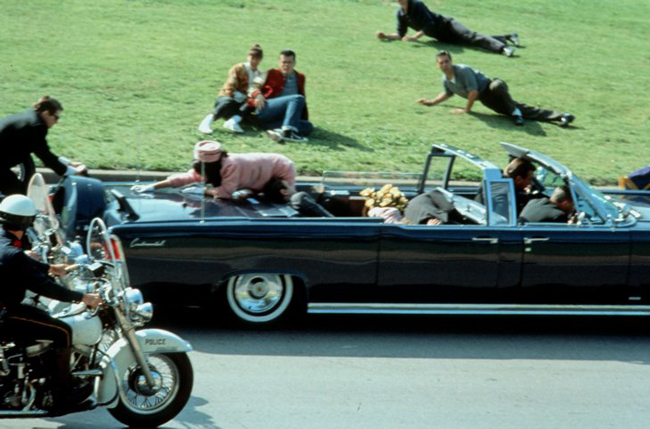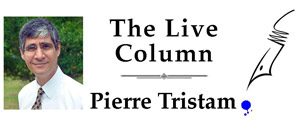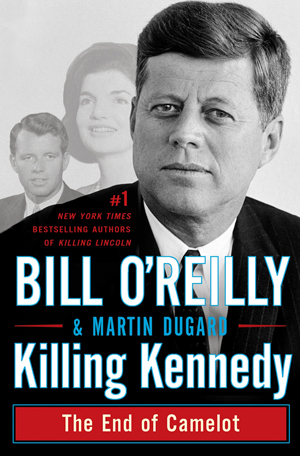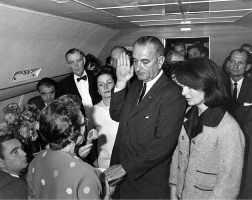
Mary Ann Clark, one of the quiet treasures of our community, started Flagler Reads Together 13 years ago after getting inspired by a librarian in Seattle. It’s a great idea. Every year in March the Friends of the Library choose a book, encourage as many people in town to read it together and gather for a variety of related events at the library. It’s a celebration of literature, and of the endangered act of reading at lengths greater than tweets, texts and the word “like.”
 Over the past dozen years Flagler read together such books as To Kill a Mockingbird, which earned Mary Ann Clark a gushing letter of thanks from Harper Lee herself, The Red Badge of Courage, and Zora Neale Hurston’s Their Eyes Were Watching God. Only once before was the month devoted to a non-fiction book. That was five years ago, when the Friends chose The Swamp, Michael Grunwald’s story of the demolishing of the Everglades. Grunwald actually came to Flagler for the kickoff to that one.
Over the past dozen years Flagler read together such books as To Kill a Mockingbird, which earned Mary Ann Clark a gushing letter of thanks from Harper Lee herself, The Red Badge of Courage, and Zora Neale Hurston’s Their Eyes Were Watching God. Only once before was the month devoted to a non-fiction book. That was five years ago, when the Friends chose The Swamp, Michael Grunwald’s story of the demolishing of the Everglades. Grunwald actually came to Flagler for the kickoff to that one.
The Friends’ all-powerful committee that chooses each year’s book went non-fiction again this year, although not entirely, considering the subject matter: the Friends picked a book on John F. Kennedy and his assassination. Both subjects owe more to fiction than reality. And although there are roughly as many books on either as there are people in “nut country,” as JFK referred to Dallas a few hours before he was killed there, the friends picked the one just manufactured by Bill O’Reilly, one of the more famous byproducts of nut country (he was a none-too-loved or accurate reporter at Dallas’s WFAA-TV in 1976 and 1977).
The book is called Killing Kennedy: The End of Camelot. It’s the third in O’Reilly’s morbid but lucrative series on history’s most famous victims of assassins. Killing Lincoln and Killing Jesus were his previous installments in what should be a limitless graveyard of the killed and famous. (The books are all written with Martin Dugard, in distinctly second billing.) Each is produced in the same cookie-cutter of illustrations, maps, an anxious present tense and chapters beginning with dateline and time stamp. “November 22, 1963, Dallas, Texas, 12:31 p.m.,” naturally works better than “Jordan River, Perea, A.D. 26, Midday.” The sentences are always short and never contemplative. O’Reilly is commanding his version of events, not proposing it.
I’ve usually avoided Bill O’Reilly as much as possible. He tried to have me on his show once and I happily declined, as I don’t find the company of bullies particularly enjoyable. That’s one of the many reasons I’ve never been fond of the Kennedys either, especially that unholy trinity of Joe, Jack and Bobby. Who else but Jack and Bobby could make even a prick like Lyndon Johnson look sympathetic?
But if the Friends of the Library could be daring once in a while, I figured I could be, too. I read the book in two days, and I’m relieved to report that the experience was not quite as intolerable as the radiation therapy I’m about to undergo. And if the purpose of Flagler Reads Together is to encourage you to read the chosen book, I can at least do that–not because it’s a great book, but because as a refresher of one of the pivotal events of the last half century in our history, it’s not a terrible 300 pages, as long as you don’t look too closely.
Because of its toxic combination of author and subject, the book is more readily appreciated for what it isn’t rather than what it is. Is isn’t an O’Reilly polemic. It isn’t another addition to the trash pile of conspiracy theories cluttering the assassination. It isn’t revisionist history, or really much history at all. It isn’t long. And for a television talking head, it isn’t terribly written, though the snappiness isn’t always stylistic: you can only mute the O’Reilly scorn for elegance–what he calls his “factor”–so much.
 What the book actually is flatters it less. It is a textual version of those made-for-TV celebrity biographies that soak up the sap of human interest at the expense of analysis or anything else that risks appealing to the reader’s intelligence. In a book alleged to be about an assassination, we learn altogether too much about Jackie’s bikini romps in Greece, Greta Garbo’s visits to the White House, Kennedy’s thing for the Mona Lisa, Marilyn Monroe’s thing for Jack and drugs, and Frank Sinatra’s anger over being ditched by the Kennedy brothers the moment J. Edgar Hoover warns them of Sinatra’s mob vibe.
What the book actually is flatters it less. It is a textual version of those made-for-TV celebrity biographies that soak up the sap of human interest at the expense of analysis or anything else that risks appealing to the reader’s intelligence. In a book alleged to be about an assassination, we learn altogether too much about Jackie’s bikini romps in Greece, Greta Garbo’s visits to the White House, Kennedy’s thing for the Mona Lisa, Marilyn Monroe’s thing for Jack and drugs, and Frank Sinatra’s anger over being ditched by the Kennedy brothers the moment J. Edgar Hoover warns them of Sinatra’s mob vibe.
So we read about Garbo’s affinity for practical jokes or of how Sinatra “races around his house and tears Kennedy photos from the walls, then finds a sledgehammer and storms outside to single-handedly destroy the concrete helipad.” But we don’t read a word about, say, how Kennedy mishandled James Meredith’s decision to break the color barrier and attend the University of Missouri in September 1962. Kennedy’s timidity led to a small and bloody civil war in Oxford, Miss., that fall, and revealed him to be the “reluctant emancipator”–in Howard Zinn’s phrase–that he was until he died, when his ask-what-you-can-do promise should have compelled him to be so much more.
O’Reilly has a chance to discuss the Kennedys’ dyspepsia (Jack’s and Bobby’s) over civil rights when he narrates a few pages about the March on Washington in 1963. But again, the pages get lost in the Kennedys’ grief over the loss of their child who, born without lungs, lived only two days (“the child who would have never entered the world if the [Cuban missile] crisis had ended in global thermonuclear war,” O’Reilly writes rather stupidly). It’s a grievous loss, but its story disproportionately overshadows the choreographing of the March on Washington, or the murder of the four little girls in a terrorist bombing at Birmingham’s Sixteenth Street Baptist Church less than three weeks later—a quadruple murder that, all told, spoke louder of the nation’s sickness and had far more ramifications for its future than the private loss of Patrick Bouvier Kennedy.
Bikini lines aside, the pages on Jackie Kennedy are the most moving, the chapter on her famous televised tour of the White House and the way she contended with her husband’s whoring especially. The pages on Jack Kennedy’s sex life are not only less moving. They have a lurid stickiness to them that reminds you why the Kennedy gift for idealism has so fatally been wrecked by the Kennedy gift for depravity. If the Kennedys’ arrogance makes you feel sympathetic for LBJ, Jack Kennedy’s misogyny elicits relative sympathy for Bill Clinton’s comparatively furtive libido.

The cold war is a distant backdrop to O’Reilly’s narrative. There’s an interesting chapter on the Bay of Pigs fiasco, another case of inexcusable indecision on Kennedy’s part. But the retelling of the failed attempt by Cuban exiles to “invade” the island with CIA and Pentagon help–vigilantes that O’Reilly calls “freedom fighters”–is a half-baked attempt to portray the failure as Kennedy’s own, when it was the result of an inherited folly only America’s national security bazaar is capable of. Kennedy did not, three months into his presidency, have the nerve to scrub the foretold failure. To O’Reilly as to many other speculators, that failure may have planted the seed of his assassination. One of them, anyway.
In contrast, the chapter on the Cuban missile crisis is quite gripping, though it overplays Kennedy’s heroism and downplays the fact that neither side actually blinked: Kennedy and Kruschev finally made a deal. Khrushchev would pull his missiles out of Cuba. The United States would pull its missiles out of Turkey. O’Reilly shows his gift for omissions along the way when he mentions the shooting down of an American U-2 spy plane during the crisis, the killing of the pilot–Major Rudolph Anderson Jr.–and the Pentagon’s demand that Kennedy launch “a massive airstrike within forty-eight hours, to be followed by an outright invasion.” He never notes that the spy plane was the intruder, and that it was shot down for illegally violating Cuban air space. O’Reilly, of course, lets the same omissions cloud his interpretation of events every day on TV in his hour of America Right or Wrong.
Worse than omissions, O’Reilly can also invent badly for dramatic effect. In a supposedly non-fiction book, that’s a cardinal sin. “[P]lease know that this is a fact-based book and some of what you will read has never before been publicly stated,” he tells us at the outset. Maybe he has a liberal interpretation of the meaning of “fact-based,” as citizens of Foxlandia usually do.
Here’s one example. At the end of the book he can’t resist telling readers that he won an award for his reporting on possible conspiracies behind the Kennedy assassination back in 1977, when he worked at at Dallas’s WFAA-TV. One assignment took him to Palm Beach, Fla., on the trail of George de Mohrenschildt, a Russian emigre and professor who’d befriended Lee Oswald, and who’d testified at length to the Warren Commission that investigated the assassination. “As the reporter knocked on the door of de Mohrenschildt’s daughter’s home,” O’Reilly writes cutely about himself, “he heard the shotgun blast that marked the suicide of the Russian, assuring that his relationship with Lee Harvey Oswald would never be fully understood.”
Well, no. He didn’t hear that shotgun blast. O’Reilly had in fact gone to Palm Beach with another reporter, and had briefly glimpsed de Mohrenschildt at The Breakers hotel, where a writer was interviewing the Russian–and from where O’Reilly and his crew were thrown out. And de Mohrenschildt, a troubled man who heard voices and had attempted suicide at least four times before then, shot himself the next day. But O’Reilly wasn’t there. This being Florida, we have the sheriff’s report on the shooting. The man’s daughter wasn’t home at the time of the shooting. O’Reilly certainly wasn’t at the door when it occurred. Nor is there much question as to who did the shooting, as O’Reilly implies. If O’Reilly is capable of inventing “facts” of the sort–where he is himself the reporter pretending to offer an authentic, first-person account–there’s no telling what else is mangled, embellished, distorted and invented in his books. But it’s O’Reilly. Which is to say, buyer beware.
For all that, it’s not the worst book on the Kennedy assassination out there. But if the Friends of the Library really wanted to commemorate the 50th anniversary of the assassination and challenge readers, they might have been better off choosing Libra, Don DeLillo’s fictional biography of Lee Harvey Oswald and what DeLillo described as “an aberration in the heartland of the real.” DeLillo can say in one sentence what everyone else cannot say in chapters or entire books. It was actually the Palm Coast Observer’s Brian McMillan who suggested I read it a few weeks ago. I can say this much: between O’Reilly and McMillan, I know who to trust.
“There is enough mystery in the facts as we know them,” a character reflects in Libra, “enough of conspiracy, coincidence, loose ends, dead ends, multiple interpretations. There is no need, he thinks, to invent the grand and masterful scheme, the plot that reaches the flawlessly in a dozen directions.”
Killing Kennedy tries hard to be that book, but Bill O’Reilly can reimagine himself only so far.
![]()
Pierre Tristam is FlaglerLive’s editor. Reach him by email here. A version of this piece was broadcast on WNZF.
![]()
Click to access library-mmkennedy.pdf





























NortonSmitty says
Pierre, first off, why would you possibly turn down an opportunity to get within reaching distance of Bill O’Reilly’s throat? It has been a dream of mine for years!
And after referencing DeLillo’s wonderful Libra that he followed up with Underworld, how can you dismiss the myriad of undeniable inconsistencies told there as a “trash pile of conspiracy theories” when they destroy the “Lone Gunman” theory? If you merely scratch below the surface of say the Warren Report, there is no way you can accept the official story. None.
If you want to dispute this, I would be glad to list hundreds of well documented articles to back my point. For instance, George de Mohrenschildt who Bill-O the Loofah King was going to interview: “Texaco insider Clint Murchison had meat packing interests in Haiti which were looked after by CIA agent George de Mohrenschildt, a wealthy Russian oilman and, according to the FBI, a Nazi spy during WWII. It was de Mohrenschildt who drove Lee Harvey Oswald from New Orleans to Dallas days before the November 22, 1963 assassination of President John F. Kennedy. Gaeton Fonzi, a special investigator for the House Select Committee on Assassinations, was on his way to interview de Mohrenschildt in Florida regarding his role in the JFK hit when the CIA agent was found with a shotgun blast through his head.” http://www.veteranstoday.com/2013/06/02/who-killed-jfk-2/ And as you say, the day after he finished his testimony to the Warren Commission, he was going to give interviews to several media outlets, including Bill, but decided to blow his head off instead. The voices and other suicide attempts I haven’t heard of before.
And I was alive when Kennedy went to Berlin and Paris. Even in the third grade I can telll you they made Obama’s trips look like a Junior High pep rally by comparison. We all have our likes and dislikes, but I would like to hear more about how you acquired your distaste for the Kennedy’s if you care to elaborate.
And it took you two days to read Bill’s book written with his audience in mind? You must be sick brother, or really busy.
dlf says
I, also read the above mentioned books don’t know which was a more waste of time the books or this article.One great book on this subject is; Norman Mailer’s ” Oswald’s Tale” I would suggest that a mind is like a parachute it only works when it is open. Pierre certainly when into the chore of reading this book with his mind made up that the author was a nut case. There are some valid points pointed out by Pierre but like most non -fiction the author takes some liberties, not unlike the above article.
m&m says
I still think LBJ was involved because he had need for power..
JuanV says
JFK Assassination: George Joannides’ CIA Files – Can They Help Determine Who Killed President Kennedy?
http://tekgnosis.typepad.com/tekgnosis/2014/03/jfk-assassination-george-joannides-cia-files-can-they-help-determine-who-killed-president-kennedy.html
BlueBookMan says
Jack & Bobby where about to release information about Majestic 12 and UFO’s. They were SILENCED !
Robin G says
Mr. Tristam initially got O’Reilly’s title wrong. It is “Killing Kennedy.” Not “JFK.” But there IS a book entitled: “Killing JFK: 50 Years, 50 Lies” and, unlike O’Reilly’s book, it has FOOTNOTES/DOCUMENTATION, and tells the clear full truth of how the media (including Or’Reilly) has lied to us for 50 years. Just search the term JFK50LIES
Sally says
Why are there not letters of outrage that our taxpayers money is used by low information types at our publicly funded library to encourage the WHOLE TOWN to read this drivel!! I thought that “Flagler Reads Together” was designed to raise the bar and have everyone read something of value. How can you call anything from O’Reielly “non-fiction”? If you want history read McCullough for Pete’s sake!
Pierre Tristam says
Sally, taxpayer money is unfortunately not being used, though it ought to be. Flagler Reads Together is an initiative by the Friends of the Library, who devote thousands of volunteer hours to help run the library and organize programs such as these. The Friends, in fact, are subsidizing the library, not the other way around. And of course “something of value” is a value judgment. David McCullough’s biographies are certainly in a different league, but they’re not without their limitations, again focusing more on “character” and easy listening’s equivalent of historical narrative than on serious and sustained analysis of what his subjects did. But that’s what Flagler Reads Together is about: to debate these books, whatever they are. I wouldn’t fault the Friends for choosing O’Reilly if the choice gets us thinking, even if O’Reilly doesn’t.
Terry says
Pierre, thank you for such an explanation of support! Yes, FRT is an initiative sponsored by the Friends of the Library and, as with all of the programs sponsored by the Friends (adult, teens and children’s), paid for the Friends. Our volunteers spend countless hours at the library, helping with day to day functions such as shelving books, greeting patrons and, supporting programs such as Flagler Reads Together. In our 13 years of sponsoring FRT, we have read classics such as The Good Earth & Red Badge of Courage. Books focusing on Florida history such as The Swamp (nonfiction) as well as Maria (very much fiction – maybe even romantic fiction). Sally commented that she thought Flagler Reads Together was designed to raise the bar and have everyone read something of value. We hope the books we elect to read all have some value – whether it is significant to you or not. FRT is designed to bring the community together, read the same book and discuss it’s interest, value, purpose….maybe bring us together in a common cause. Remember when we decided to read “To Kill a Mockingbird”? It worked, the community talked. They listened.
The programs selected to compliment our book each year are designed to be of interest whether you read the book or not. Obviously, we want you to read the book because the programs might be a little more meaningful. However, if you don’t , the programs can stand on their own. For example, this year we had a speaker from NASA speaking of the origins of the space age (initiated by JFK). He was an excellent speaker and his presentation very informative of the past, present and future of our role in space. As a final note, the books selected are chosen based on recommendations from patrons who have attended & participated in the programs, current events, history (or anniversaries of history, such as JFK) or common interest based on our reading base. We also look at what other Libraries and Friends groups are reading. So far, after 13 years of experience, we seem to have a pretty good track record. And, we thank Flagler Live for your ongoing support in our efforts.
[email protected] says
why would you decline to go on ORreilly’s show,would it be maybe he would show you that he is more intelligent than you. it would have been an interesting show kind of like david and goliath, you being goliath. It tells me you do not like a challenge. O’Reilly is not a bully, he just does not want people to “spin” and just answer the questions.